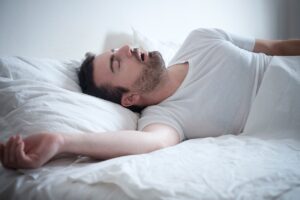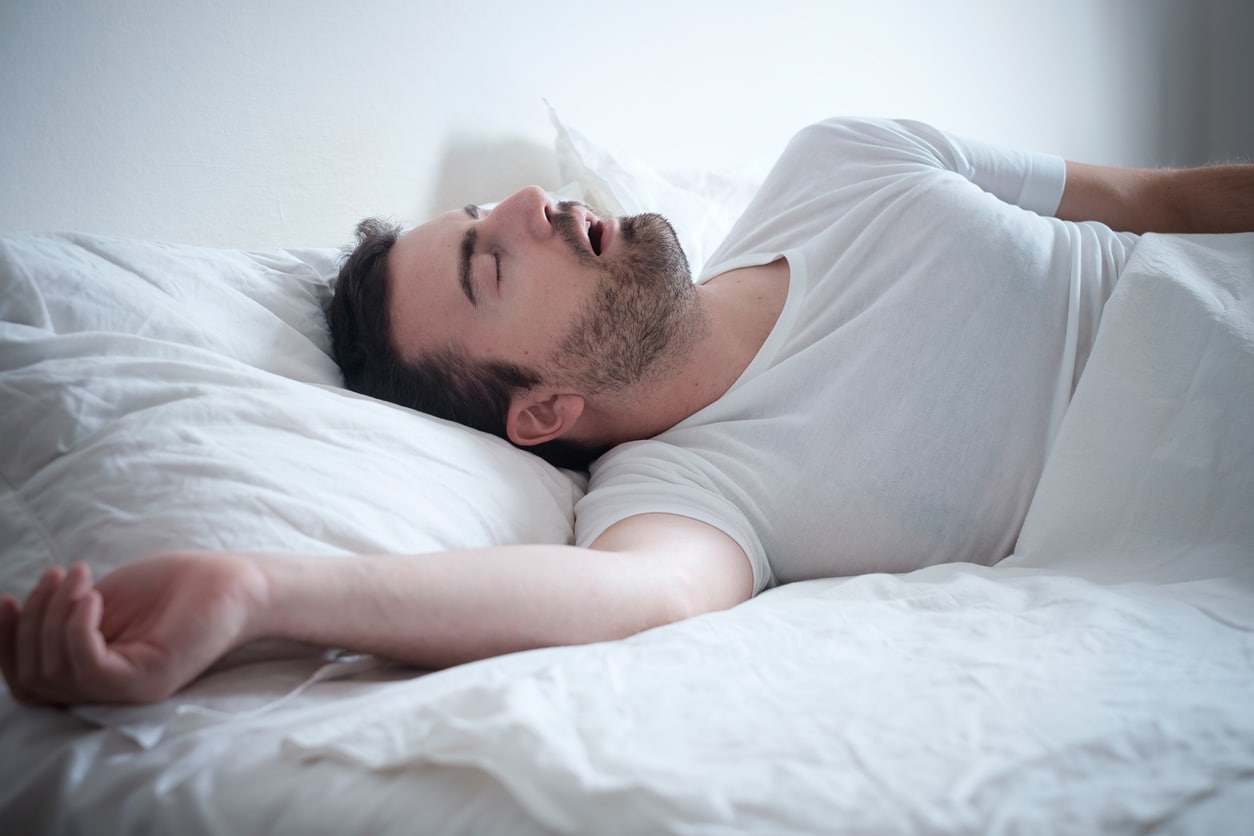If you’ve been suffering with Sleep Apnea in Minot, NY or the surrounding areas, consider contacting Broadway Family Dentistry for treatment! Our practice offers a thorough examination to determine the cause of your Sleep Apnea, and our top dentists will construct a personalized treatment plan for your condition. Dial 701-839-1299 to schedule your appointment today!
What is Sleep Apnea?

Sleep apnea is a common but serious sleep condition in which breathing stops for several seconds at a time. Apnea episodes occur during sleep, as the term implies, and may happen dozens of times in an hour. Currently, more than 18 million American adults have diagnosed with sleep apnea.
Although most patients with diagnosed are adults, many children also suffer from poor sleep quality or sleep-disordered breathing. These children may not stop breathing completely but often breathe through their mouths instead of noses. They typically exhibit some of these symptoms (bedwetting, night sweats, sleepwalking, night terrors/nightmares, restless sleeping, dark circles under eyes, snoring or loud breathing, and even ADHD symptoms during the daytime).
What Causes Sleep Apnea?
Sleep apnea occurs when the soft tissues and muscles in the throat relax during sleep. In most people, the amount of muscle relaxation is not so great that their airway becomes blocked. Individuals who experience sleep apnea have particular structural anatomy or medical conditions that cannot withstand the pressure of relaxed tissues around the airway.
Obstructive sleep apnea does not relate only to structural irregularities. There are certain factors that have been identified as possible causes:
• Large tonsils or adenoids (especially kids)
• Mouth breathing
• Obesity
• A family history of sleep apnea
• Misalignment between the upper and lower jaw
• Underdeveloped upper jaw
• Retruded lower jaw
• Type II diabetes
• Smoking
• Stroke
• Certain medications
• Alcohol
What Are the Symptoms of Sleep Apnea?
One of the strongest indicators of sleep apnea is loud, chronic snoring with occasional silence when breathing stops. The oxygen deprivation that occurs during multiple apnea episodes could cause morning headaches. Mouth-breathing during sleep could cause you to wake up with a dry mouth. People with sleep apnea are usually sleep-deprived, which results in its own set of symptoms, including:
• Feeling sleepy or chronically fatigued regardless of getting several hours of sleep
• Feeling irritable or depressed
• Experiencing a loss of sexual function or libido
• Having difficulty concentrating and remembering things
What is the Difference Between Snoring and Sleep Apnea?
Like obstructive sleep apnea, snoring results from muscle and tissue relaxation around the throat. When we snore, it is because the airway is partially blocked and tissue is vibrating as air passes through. Snoring may be louder or quieter depending on factors such as weight, alcohol or medication consumption, and the anatomy of the airway.
The primary difference between snoring and obstructive sleep apnea is that a snorer makes continual noise. With obstructive sleep apnea, breathing stops and may resume with a loud gasping or choking sound. Unfortunately, even snoring alone can cause health problems. In a 2013 study, snoring was a bigger predictor for heart attack/stroke than even smoking.
See What Our Patients Are Saying:
"Absolutely impressed with how I was greeted as well as my dental assistant and Dr. treated me with my care at the forefront. Due to the caring about my situation I was able to be seen before I went on vacation. Extremely happy with this Dentistry!"
Is Sleep Apnea Dangerous?
Despite the fact that obstructive sleep apnea, in particular, is so common, many people who have this sleep disorder go undiagnosed. Because the most noticeable symptoms, such as loud snoring and choking sounds, occur during sleep, it is quite possible that the affected person does not realize what their body is going through. Undiagnosed and untreated sleep apnea can have grave, even life-threatening effects for the individual as well as the general public.
What Are the Sleep Apnea Symptoms?
The emotional, mental, and physical consequences of being chronically sleep-deprived are profound. Side effects may go far beyond feeling sleepy during the day. People with untreated sleep apnea may display physical and behavioral effects including:
- Falling asleep at work, in a chair at home, or at stoplights.
- Falling behind with work and personal obligations.
- Diminished professional and personal relationships due to moodiness, anxiety, or depression.
- A significantly higher risk for automobile and other types of accidents.
The persistent deprivation of oxygen and quality, restful sleep also affect long-term health and wellness, increasing the risk of:
- Type II diabetes
- Heart disease
- Congestive heart failure
- Heart attack
- Cardiac arrhythmia
- Glaucoma
- Stroke
- High blood pressure
- Metabolic syndrome
- Pregnancy complications

How is Sleep Apnea Treated?
The first step in obtaining appropriate sleep apnea treatment is to schedule a thorough consultation with your doctor. When consulting with your doctor, also discuss medications and alcohol use. Your doctor will order a sleep study, which may be conducted at home, to confirm your diagnosis and determine which type of obstructive sleep apnea you have. Discuss your sleep patterns, how you feel during the day, and any other symptoms you may be experiencing.
Speak with your partner and ask if your snoring is disruptive or if they notice other sounds, such as choking or gasping. Sleep alone? Record yourself sleeping to observe if these sounds are present.
Sleep Apnea Treatment for children
In children, filling out a sleep questionnaire is often the first step in determining treatment. Many times removal of the source of airway obstruction by allergy management, tonsil/adenoid removal, and sometimes myofunctional therapy to restore proper nasal breathing and swallowing pattern can resolve the problem. Because sleep-disordered breathing is a multifactorial problem, it often needs a multiple discipline approach. At our office, we can use a system called HealthyStart TM to help correct tongue placement and nasal breathing to correct issues earlier.
CPAP treatment
The most common form of sleep apnea treatment is called CPAP, or continuous positive airway pressure. This treatment is delivered via a mask that may fit over the mouth and nose or only over the nose. The mask is connected to a small device that forces air through a tube, the mask, and into the airway. Though gentle, the pressure is sufficient to keep the airway open against heavy muscle and soft tissue.
MicrO2 Treatment
An alternative therapy, if CPAP is not ideal for you or as co-therapy with CPAP is oral appliance therapy. At Broadway Family Dentistry, an oral device (MicrO2) is customized by your dentist to fit your oral anatomy. The apparatus comfortably positions and supports the lower jaw forward to help keep the tongue out of the airway while you sleep. Oral appliances are compact, convenient, safe, and effective.
Patients of our Minot, ND office may also be good candidates for Nightlase™ in-office laser treatment. It can be used for snoring, mild-moderate sleep apnea, or when patients are not tolerant of either CPAP or oral appliance therapy. See more information on our Nightlase™ page.
Learn more about how we can help you manage your symptoms. Call 701-839-1299
